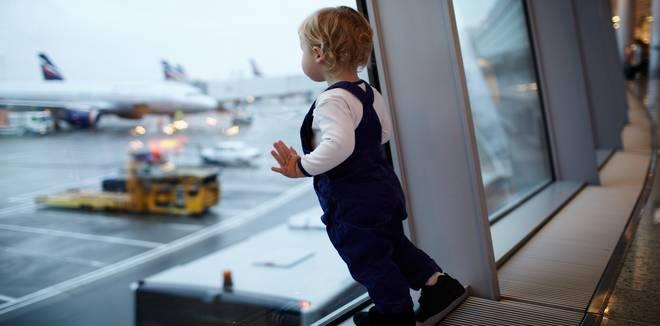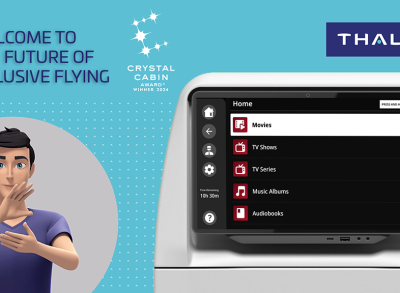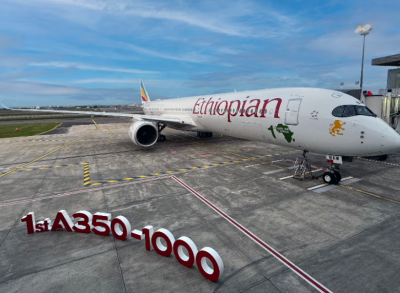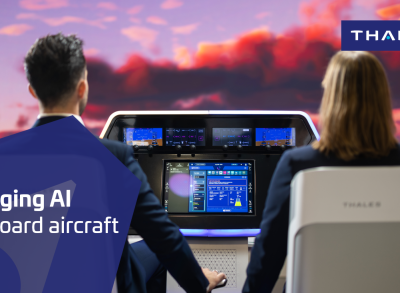Imagine the passenger of the future
What will be the new normal flight in five, 10, 15 years? How will passengers view the stress and hassle of both regional trips and international itineraries?

Once at the airport the traveler approaches the fast moving security lane and again using their smartphone, taps the NFC reader which identifies the individual. Moving through the security line the traveler advances to the non-intrusive biometric scanner which cross-checks their identification against their profile and boarding information. Total time for checking-process and identification control – 3 minutes. The traveler, who recognizes this efficiency with a smile, is then off towards their gate to await boarding.
Walking through the terminal the traveler passes the duty-free shops but does not have enough time to look around and with a sigh proceeds to the gate. At the gate the passenger is struck by hunger waiting to board the aircraft and revisits the airline’s app to examine the menu. Choosing a meal and beverage, boarding of the aircraft begins. Having placed their carry-on safely overhead, the passenger takes out their smartphone and places it in the seatback’s built-in charging cradle to begin syncing with the IFE system. Seconds later the user is greeted by a personalized message. Despite every passenger receiving similar “welcome aboard” messages the cabin is a quiet hum of people getting settled because the messages are delivered through advanced directional speakers equipped in each passenger’s headset.
After the plane is prepped for takeoff it begins taxiing down the runway. At this point, the passenger is served a reminder through the IFE of the meal and beverage selection made before boarding. The passenger is then asked if they would like to add anything else to their inflight meal service. Content with their meal selection, but remembering the missed opportunity to visit the duty-free shops, the passenger navigates to the inflight storefront to see what was missed. Take-off occurs moments later as advanced air traffic management capabilities are synced with the plane’s cockpit allowing air traffic controllers to more quickly and safely manage high-capacity airspace. During the ascent to 30,000 feet, the passenger sees that a long-desired designer watch is available from the inflight storefront. Deciding to purchase this item the passenger schedules it to be delivered to the hotel at their destination to wear for the next day’s meetings. With the latest security features built into the inflight storefront, the passenger trusts that their purchase was made securely and that their information is well protected – convenience at its best regales the passenger.
The cabin crew, now having begun their rounds, approaches the passenger and sees the passenger’s information from their connected crew device. Noting the passenger’s inflight meal choice and seeing that they have just completed a significant inflight purchase, the crew member offers the passenger a complimentary premium beverage – a delight for the passenger who is pleased with such great service.
Enjoying their drink, the passenger receives an incoming message on their smartphone, which remained connected because of the gate-to-gate connectivity available. The passenger responds to the message and afterwards begins using their smartphone to control their IFE content.
The passenger then pulls up the ‘favorites’ saved earlier that day and is served a few suggestions based on the saved choices. The passenger is amazed that many of the movies being recommended are just out of theatres and are still months from retail release so the passenger then selects a comedy they couldn’t see in theaters to watch after a live sporting event they know is about to begin. From the passenger’s smartphone, the entertainment selection is paired with the ultra-high-definition seat-back screen and the game begins. At a critical point in the game, the in-flight meal service begins but luckily the passenger is able to pause and rewind the event to not miss a moment of the action.
Following the game, the movie which was queued is about to begin when the passenger gets several new notices on their smartphone which was returned to the seatback cradle. The messages are from the travel company confirming the passenger’s destination transportation and the hotel confirming delivery of the watch purchased through the in-flight storefront – setting the passenger further at ease with their experience.
Shortly after the movie ends the plane is prepared for landing. Knowing little of attractions at the destination city, the passenger takes the final few minutes of the flight to see what there is to see and do. Once disembarked, the passenger pulls out their identification in anticipation of passing through customs. The traveler then gets to the automatic border cross-point and places their smartphone on the reader, scans their identification and looks at the camera. The airport security system then vets the traveler by cross-checking their identification which matches their ticket and known biometrics. The system quickly confirms this is the authorized individual and the gate opens. Total border control time – 2 minutes.
Arriving at the hotel, the passenger receives one final notice on their smartphone. It is a thank you message from the airline with updates on their frequent-flyer history.
With the travel experience over, the passenger thinks, “this experience was so efficient, convenient and pleasurable, who wouldn’t be satisfied? Thankfully Thales and all their smart innovations in the last decade have improved the way people travel.”
Find us on Twitter @ThalesAerospace, on our official Youtube channel Onboard TV and on LinkedIn Thales Aerospace.




